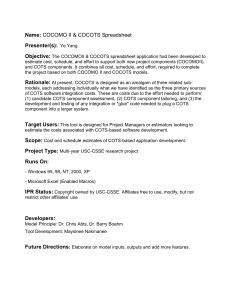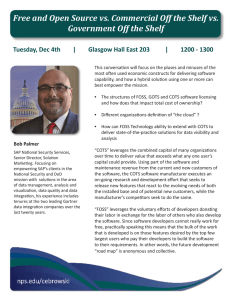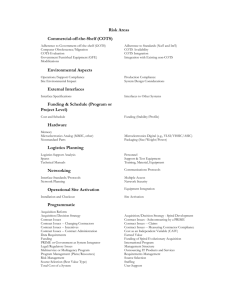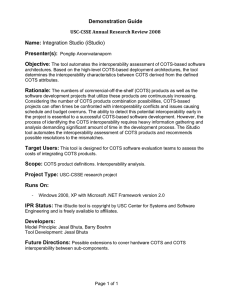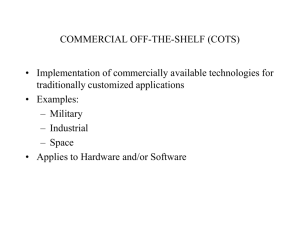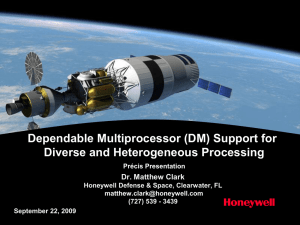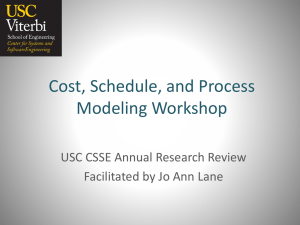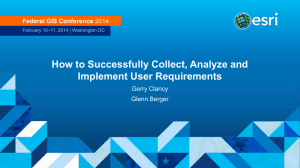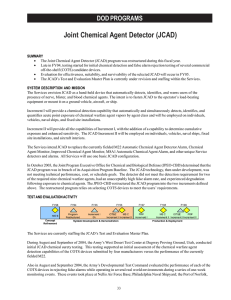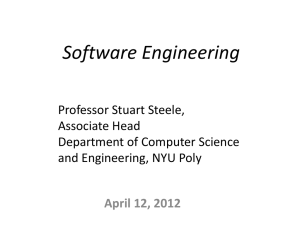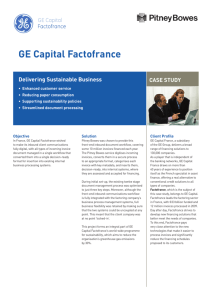Network Delivery & Development IAM COTS
advertisement
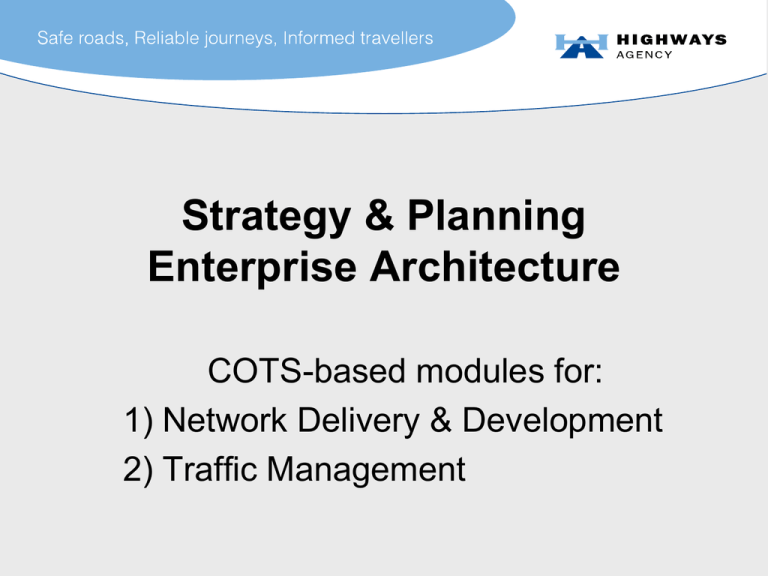
Strategy & Planning Enterprise Architecture COTS-based modules for: 1) Network Delivery & Development 2) Traffic Management HAPMS – As-Is • Based on Pitney Bowes Insight “Confirm” COTS package. • Supports multiple application modules including: • SWEEP • Whole-Life Costs • Scheduled Road Works • Accident Records • Delay Cost Model • Not all in-scope for IAM Programme Network Delivery & Development IAM COTS Example Main candidates: Pitney Bowes Insight (Confirm), Exor, Symology. TI2011+ Move towards COTS? • e.g. ITIS Holdings - TrafficScience INM - Move towards COTS • CUTLAS is fully compliant • • with UTMC specifications. Integrates data from traffic control, street asset and other traffic/highway-related subsystems. Implements high performance ENVITIA MapLink command and control to provide full GIS capability. UTMC-IAM Integration Case Study: Oxfordshire County Council Standards-based Integration • Service-Oriented Architecture (SOA). • Enterprise Service Bus (ESB). • Incremental Deployment. • Re-use of Legacy Systems which still provide business value. • Sweat assets instead of wholesale “rip and replace”. • Reduce costs. Typical COTS Features • • • • • • • • • GIS User Interface Support for leading Spatial Databases Support for OGC standards – WMS, WFS, etc. Flexible Web Services OS MasterMap ITN support Snap to OS MasterMap facility Support for the Traffic Management Act (TMA) Network Definition & Management with multiple linear referencing Compliance/Integration with BS7666 – National Land & Property Gazetteer • 2-way transmission of EToN Notices • Spatial representation & Management of: • • • • • • • Link/Node Network structures Street Gazetteer Associated street data UK PMS Defects & Treatments Street works Traffic pinch points Import/Export and maintenance of NSG Common Denominators • • • • • • • GIS User Interface Spatial Data Infrastructure Spatial database Standard OGC Web Services Modular design Open interfaces Multiple location referencing systems may be overlaid with automatic translation from one referencing system to another. INSPIRE Network Transformation Web Service • INSPIRE requires interoperability across Europe. • Needs a standardsbased Public (external) schema. • Transformation services allow organisations to meet their legal obligation whilst ensuring continuity of their existing business systems. Conclusions • URNM was originally conceived against an • As-Is Architecture with 22+ siloed solutions. The To-Be Architecture is converging on two COTS-based Application Frameworks: • ND&D: IAM (currently out to OJEU); • TMD: Integrated Network Management is rolling out Envitia’s Cutlas (UTMC) system. • Each of these are converging on Open • standards such as OGC Web Services. URNM is in danger of “Reinventing the wheel” and breaking the EA Principle of “Reuse before buy before build”.
